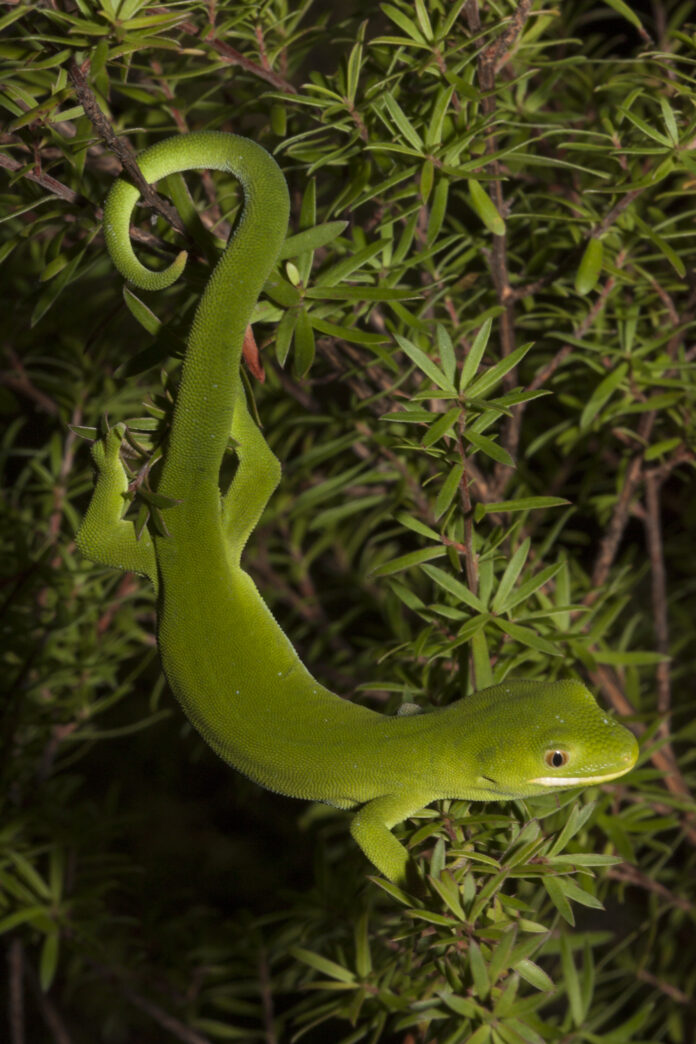Source: Auckland Council
Small in numbers and small in size; enigmatic and increasingly rare, we’re talking reptiles and frogs here.
Evolutionarily distinct and secretive by nature; these amphibious creatures are camouflage champions.
Auckland Council has just released its Regional Threat Assessment for reptiles and amphibians, the first two in a series of threat assessments for indigenous species in the Auckland region.
The report aligns with Auckland Council’s Indigenous Biodiversity Strategy to conserve the greatest number and most diverse range of indigenous ecosystems and achieve long term recovery of the greatest number of threatened species.
“In order to protect our threatened species, we need to understand which species are living within our region,” says Rachel Kelleher, General Manager Environmental Services.
“Knowing who is in ‘residence’ helps us keep track of the status of our reptile and amphibian populations. This allows us to work to manage threats and restore environments so our threatened species can flourish.”
New Zealand is home to over 123 reptile and amphibian species making it a global hotspot. The number keeps growing as more species are still being described.
Twenty-eight reptile species reside in the Auckland Region, (9 marine, 11 skinks, 7 geckos and tuatara); all are endemic, meaning they’re found nowhere else in the world.
In contrast, there are only four amphibian species in the region; the native Hochstetter’s frog, two bell frogs, introduced from Australia, the northern Great Barrier Island swimming frog. The latter has only been sighted twice and remains unclear if it’s an endemic New Zealand species or an introduced one. Hochstetter’s frogs are ‘regionally declining’ and found in the Hunua and Waitakere Ranges, northern Rodney and on Great Barrier Island /Aotea.
“We’re so fortunate to have such a selection of reptiles and amphibians on our doorstep. This review we’ve undertaken with several leading herpetologists will give us a baseline as to the presence of reptiles in the region and allow us to monitor this over the coming years,” says Sabine Melzer, Senior Bio Information Analyst.
“Reptiles play an important role in our ecosystems and are part of the wider food chain. They eat insects but also fruit and can act as pollinators for our native plants. They are also a food source for native bird species.”
“Frogs are not only an integral part of our ecosystems but play a crucial role in advances in human medicine and act as bio-indicators for pollution. Frogs were used in the development of pregnancy tests and chemicals in frog skin are used in research for new antibiotics against resistant bacteria,” Sabine adds.
The biggest threat to our unique reptiles is introduced mammals like rodents, mustelids, hedgehogs, cats and habitat destruction brought about by urbanisation.
All native geckos and skinks in the Auckland region are Threatened or At Risk with five species being identified as extinct.
The region is a stronghold containing more than 20 per cent of the national population of nine species of reptiles. The Muriwai gecko and Mokohinau gecko are only found in the Auckland region.
Several species are more threatened in Auckland than nationally. The tuatara is ‘regionally critical’ but nationally ‘at-risk’ as is the Robust skink which is only found on one small island in the Mokohinau island group.
“When you think frogs,” say Sabine, “New Zealand’s natives, which have changed little in millions of years, do things differently.”
“Frogs croak, right? Not ours. Frogs lay eggs that hatch into tadpoles, right? No, ours don’t do tadpoles either. Most don’t even have webbed feet or catch insects by flicking out their tongues.”
The status of all known reptile and amphibian taxa in the Auckland Region were assessed using the New Zealand Threat Classification System.



